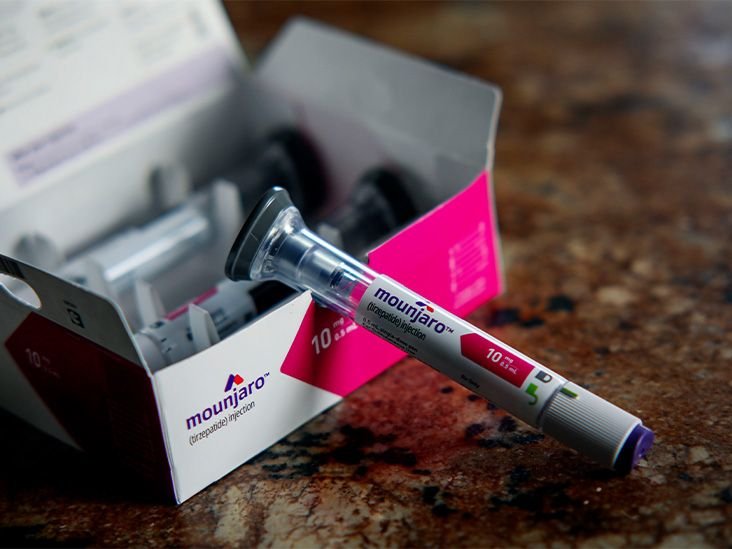In recent years, there has been a significant shift in the management of chronic health conditions like diabetes and obesity. While lifestyle changes and traditional treatments have always been the go-to approach, a new medication has emerged on the scene with promising results—Mounjaro injections(حقن المونجارو). This revolutionary treatment is changing the way healthcare providers manage type 2 diabetes and obesity, offering patients a new hope for effective weight loss and improved blood sugar control.
Mounjaro, also known by its generic name tirzepatide, is the latest in a class of injectable medications that not only help in managing blood glucose levels but also aid in weight loss. In this article, we will explore how Mounjaro works, its benefits, potential side effects, and how it fits into the broader landscape of weight loss and diabetes management.
1. Introduction
Mounjaro injections represent a breakthrough in the management of obesity and type 2 diabetes. Approved by the U.S. Food and Drug Administration (FDA) in 2022, Mounjaro has garnered attention for its impressive efficacy in lowering blood sugar and promoting weight loss in individuals with type 2 diabetes.
Unlike traditional weight loss drugs, Mounjaro works by targeting multiple hormones involved in appetite regulation and blood glucose control. Its dual action is what makes it so promising in treating both obesity and diabetes simultaneously. But how does it work, and why is it considered the new frontier in the fight against these chronic health conditions? Let’s dive deeper.
2. What is Mounjaro (Tirzepatide)?
Mounjaro is an injectable medication developed by Eli Lilly for the treatment of type 2 diabetes and weight management. It is the first dual-agonist drug, meaning it activates two key receptors involved in glucose and appetite regulation. These receptors are GLP-1 (glucagon-like peptide 1) and GIP (gastric inhibitory polypeptide), both of which play essential roles in managing blood sugar and controlling appetite.
The main ingredient in Mounjaro, tirzepatide, is a synthetic version of a naturally occurring hormone that mimics the function of GLP-1 and GIP. By targeting both of these hormones, Mounjaro offers a multifaceted approach to managing type 2 diabetes and supporting weight loss.
3. How Mounjaro Works
Mounjaro’s unique mechanism of action lies in its ability to simultaneously stimulate both the GLP-1 and GIP receptors. Here’s a breakdown of how each of these receptors helps manage blood sugar and weight:
- GLP-1 (Glucagon-Like Peptide 1): This hormone is involved in stimulating insulin production, reducing glucagon secretion (which prevents the liver from releasing too much glucose), and slowing gastric emptying. These actions help regulate blood sugar levels after meals. GLP-1 also plays a role in reducing appetite by signaling to the brain that you’re full, thus leading to decreased food intake.
- GIP (Gastric Inhibitory Polypeptide): GIP works alongside GLP-1 to regulate insulin release and improve glucose metabolism. Research has shown that GIP has a more significant impact on insulin sensitivity, particularly in patients with type 2 diabetes. It may also contribute to the reduction of hunger and increase fat oxidation.
By targeting both receptors, Mounjaro helps to achieve more comprehensive control over blood sugar levels and appetite, making it particularly effective for individuals with diabetes who also struggle with obesity.
4. The Benefits of Mounjaro Injections
Weight Loss Benefits
One of the most exciting aspects of Mounjaro is its ability to promote weight loss. In clinical trials, patients using Mounjaro experienced significant reductions in body weight—often more than 10% of their total body weight. This is a considerable achievement, as weight loss is a critical factor in managing type 2 diabetes and improving overall health.
The weight loss effects of Mounjaro can be attributed to its ability to reduce appetite. By mimicking the GLP-1 and GIP hormones, Mounjaro helps to suppress hunger, leading to reduced calorie intake and, ultimately, weight loss. Additionally, the medication slows gastric emptying, which means food stays in the stomach longer, increasing feelings of fullness and satisfaction after meals.
Blood Sugar Control and Diabetes Management
Mounjaro’s dual action on both GLP-1 and GIP receptors provides effective blood sugar control in individuals with type 2 diabetes. By stimulating insulin production and inhibiting the liver from releasing excess glucose, Mounjaro helps lower post-meal blood sugar levels. This can lead to more stable blood sugar throughout the day, reducing the risk of complications associated with diabetes, such as heart disease, kidney damage, and nerve damage.
In clinical trials, Mounjaro demonstrated a greater reduction in hemoglobin A1c (a marker of long-term blood sugar control) compared to other diabetes medications. This makes it a powerful tool for individuals who have struggled to manage their diabetes with oral medications alone.
Cardiovascular Benefits
In addition to its effects on blood sugar and weight, Mounjaro may also offer cardiovascular benefits. Type 2 diabetes is a known risk factor for heart disease, and controlling blood sugar levels is essential for reducing that risk. Early research suggests that Mounjaro may lower the risk of major cardiovascular events, such as heart attack and stroke, by improving both blood sugar control and weight loss.
5. Mounjaro vs. Other Weight Loss and Diabetes Medications
Mounjaro is not the first medication designed to help with weight loss and diabetes management, but it is one of the most advance. Let’s compare Mounjaro to some other popular treatments:
- GLP-1 Agonists (e.g., Ozempic, Wegovy): These medications are similar to Mounjaro in that they also target the GLP-1 receptor to improve blood sugar control and suppress appetite. However, Mounjaro’s dual action on both GLP-1 and GIP receptors sets it apart, potentially providing more robust weight loss and better blood sugar management.
- SGLT2 Inhibitors (e.g., Farxiga, Jardiance): These medications work by helping the kidneys remove excess glucose through urine. While they are effective at controlling blood sugar, they do not have the same weight loss benefits as Mounjaro.
- Metformin: A cornerstone of type 2 diabetes treatment, Metformin helps improve insulin sensitivity and lower blood sugar levels. However, it is not typically associated with significant weight loss like Mounjaro.
While there are other effective treatments available, Mounjaro’s dual action mechanism provides a more comprehensive approach to managing both blood sugar and weight loss.
6. Who Can Benefit from Mounjaro Injections?
Mounjaro is primarily prescrib to individuals with type 2 diabetes who have not achieved adequate blood sugar control with oral medications alone. It is also beneficial for those who are overweight or obese and need help with weight management in addition to managing their diabetes.
Mounjaro is not suitable for individuals with type 1 diabetes or those with a history of severe allergic reactions to the medication. It is important to consult with a healthcare provider to determine if Mounjaro is the right treatment for you based on your medical history and needs.
7. Possible Side Effects and Risks
Like any medication, Mounjaro can cause side effects. Some of the most common side effects include:
- Gastrointestinal issues: Nausea, vomiting, diarrhea, and constipation are among the most frequently reported side effects. These symptoms are usually mild and tend to improve over time as the body adjusts to the medication.
- Low blood sugar (hypoglycemia): When used in combination with other diabetes medications, Mounjaro may increase the risk of low blood sugar.
- Pancreatitis: Although rare, there is a risk of developing pancreatitis (inflammation of the pancreas) while using Mounjaro. Patients should be monitor for symptoms such as severe abdominal pain.
It is important to talk to your healthcare provider about any concerns you may have regarding side effects and to report any unusual symptoms immediately.
8. Frequently Asked Questions (FAQs)
Q1: How often do I need to take Mounjaro?
Mounjaro is administered once a week via subcutaneous injection. Your healthcare provider will guide you on the best time and method for injecting.
Q2: How quickly can I expect results from Mounjaro?
Many patients start seeing improvements in blood sugar control and weight loss within the first few weeks of treatment. Full effects may take several months.
Q3: Is Mounjaro covered by insurance?
Insurance coverage for Mounjaro varies depending on your plan. Be sure to check with your provider to determine if Mounjaro is cover under your prescription benefits.
Q4: Can Mounjaro be used for type 1 diabetes?
No, Mounjaro is only approve for the treatment of type 2 diabetes. It is not recommend for use in type 1 diabetes or diabetic ketoacidosis.
Q5: Will Mounjaro interact with other medications I’m taking?
Mounjaro may interact with certain medications, especially those used to manage blood sugar. Always inform your healthcare provider about all the medications and supplements you are taking before starting Mounjaro.
9. Conclusion
Mounjaro injections are a promising new option for individuals with type 2 diabetes who also struggle with obesity. By targeting both GLP-1 and GIP receptors, Mounjaro offers a multifaceted approach to managing blood sugar levels and promoting weight loss. With its ability to significantly reduce body weight, control blood sugar, and provide potential cardiovascular benefits, Mounjaro represents a new frontier in diabetes management and weight loss.
If you are struggling with diabetes or obesity, talk to your healthcare provider to see if Mounjaro is the right treatment for you. It may offer the solution you need to regain control over your health and quality of life.
















Leave a Reply